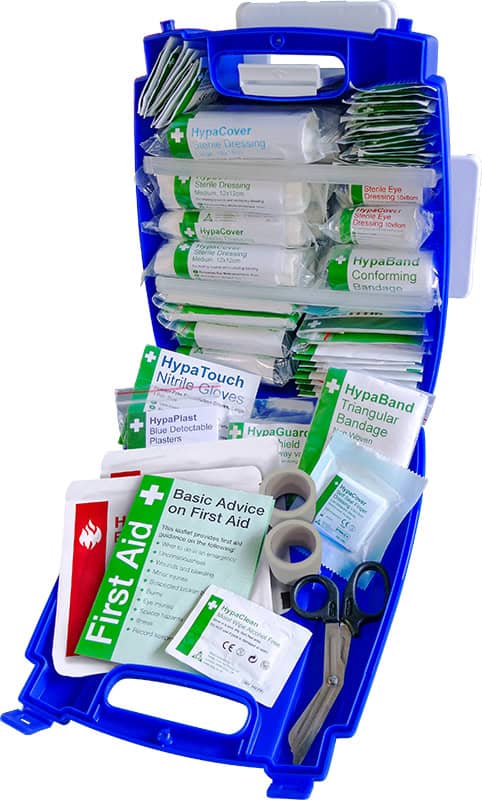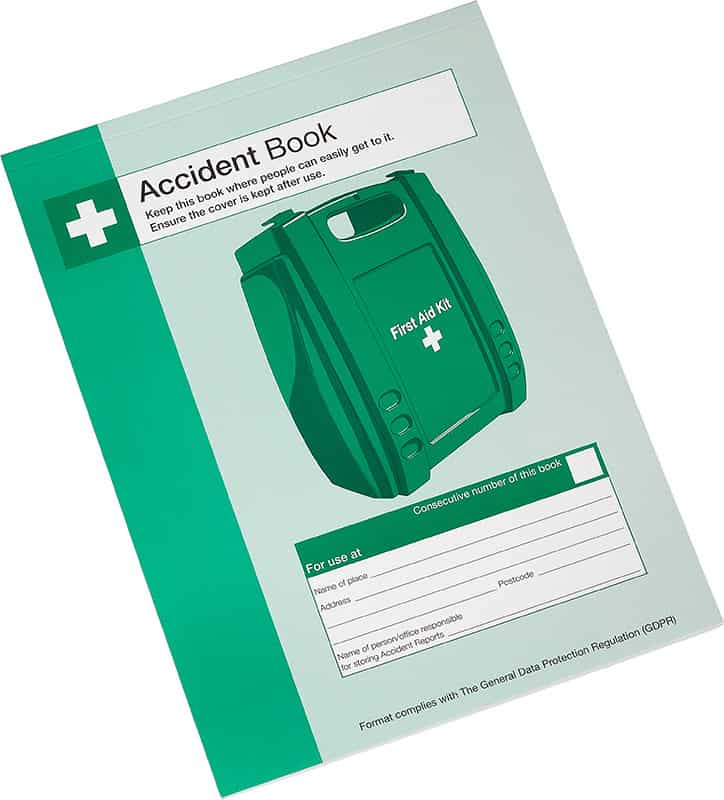
Kitchens can be a danger zone, filled with a number of hazards such as sharp objects, hot utensils and surfaces, and allergens around every corner. Which is why it is so important for professional kitchens to supply suitable first aid supplies for all staff.
Essential contents of a professional kitchen First Aid Kit
We supply a range of catering first aid kits ideal for any professional kitchen environment, from small behind the bar kits to large first aid kits for a bustling kitchen. These come in both British Standard and HSE; HSE kits contain the basic equipment required by law for first aid, while the British Standard kits offer a more comprehensive cover.The essential items for any commercial kitchen first aid kits to be legally compliant are included in our catering first aid kit checklist:
- A first aid guidance leaflet
- Washproof plasters (Blue)
- Eye dressings
- Triangular bandages
- First aid dressings, 12x12cm
- First aid dressings, 18x18cm
- Sterile moist wipes
- Disposable gloves
Recommended contents for a professional kitchen First Aid Kit
These include items for burn care, such as: Both of which are used to soothe the burn area and used as alternative to running water if there is no access to any at the time or if in transit to a hospital or GP surgery.
Supplying first aid equipment to deal with eye injuries is an important part of kitchen first aid, due to the chemicals used in cleaning and the number of items that could potentially splash up when cooking. British Standard first aid kits will include eye dressings, however, eye wash pods are also recommended for rinsing the eye out quickly and efficiently.
British Standard first aid kits provide even more comprehensive supplies to the catering first aid kit, for example:
- Microporous tape
- Finger dressings
- Face shield
- Foil blanket
- Clothing cutters
- Conforming bandage, 7.5cm
If you wish to provide multiple first aid kits for different situations but would like them all located in one place to avoid confusion and make them easily accessible, we also supply first aid points. These first aid points allow for multiple kits to be provided for staff in one location using interlocking wall-mountable brackets.
What are the legal requirements for kitchen first aid kits?
Like any workplace, professional kitchens are required to meet the legal requirements set out by the HSE to ensure that there are “adequate and appropriate” first aid supplies, equipment and trained personnel in a workplace.This means that the number and type of first aid kits and their locations are left up to your discretion based upon a risk assessment and the needs it has highlighted within your kitchen.
With kitchens and other food preparation areas, there are also the legal requirements explained in the Food Safety Act 1990 which has meant that all plasters used in catering environments must be blue. This is so that if a plaster were to fall off and land in any food that was being prepared, it would be clearly visible. For the same reason, there are also catering plasters (still blue) which contain a metallic strip just in case they manage to slip through the visual checks.
Other health and safety requirements
Beyond providing fully stocked catering first aid kits, other health and safety provisions that need to be made by professional kitchens include: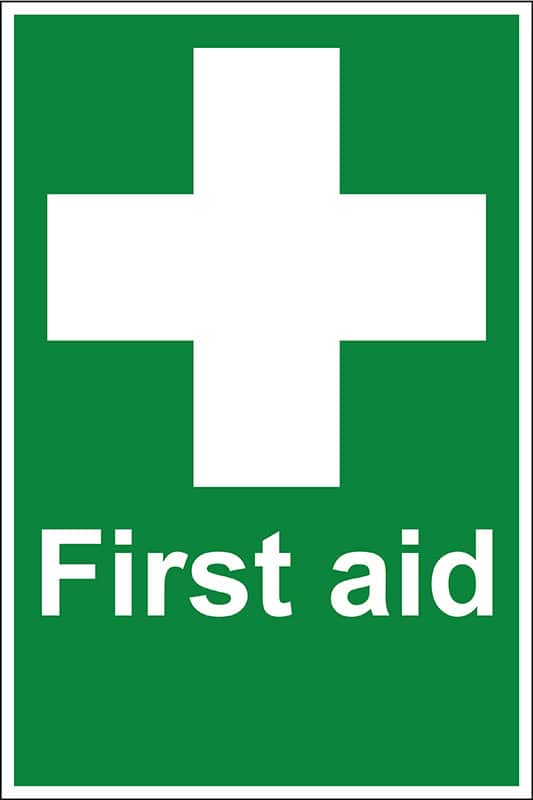 Signage
Signage
Having signs and posters around the workplace helps to comply with regulations and alert staff to best practices in the area that they are working in.There are numerous signs that can be used in a professional kitchen to help improve the level of health and safety. These include fire safety signs and first aid signs.
Training
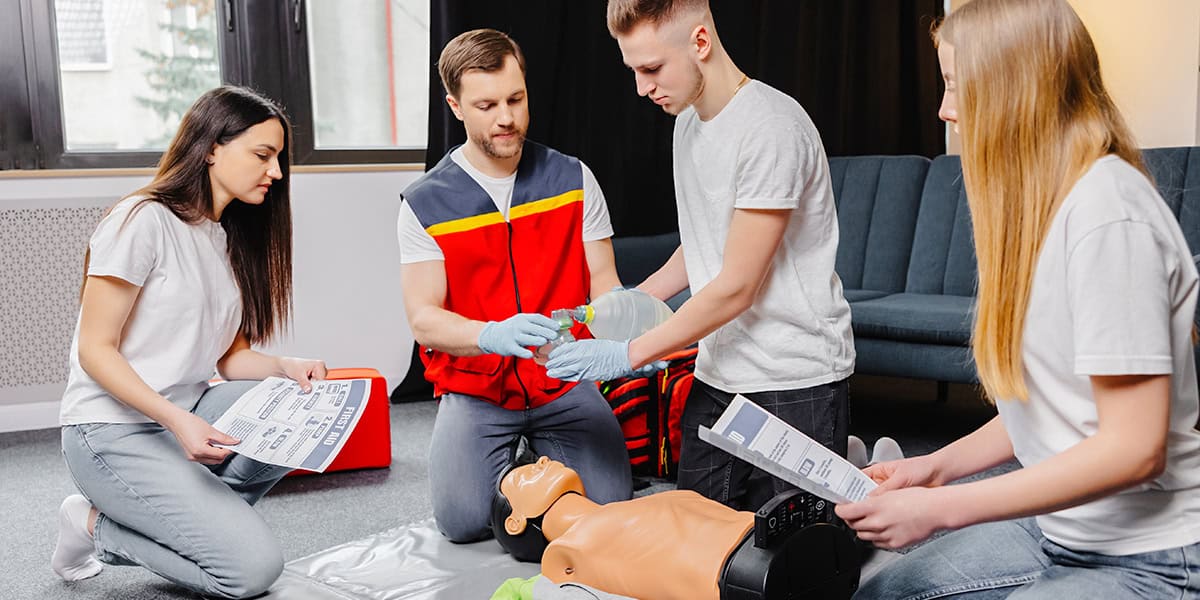
Safety equipment and guidance is incredibly important, but so too is having staff that are fully trained and capable should there be an incident.
For example, if you require trained first aiders they will need to be qualified, and if there is a high risk of fire you may find it necessary to train members of staff to become fire marshals to ensure everyone’s safety.
First Aiders
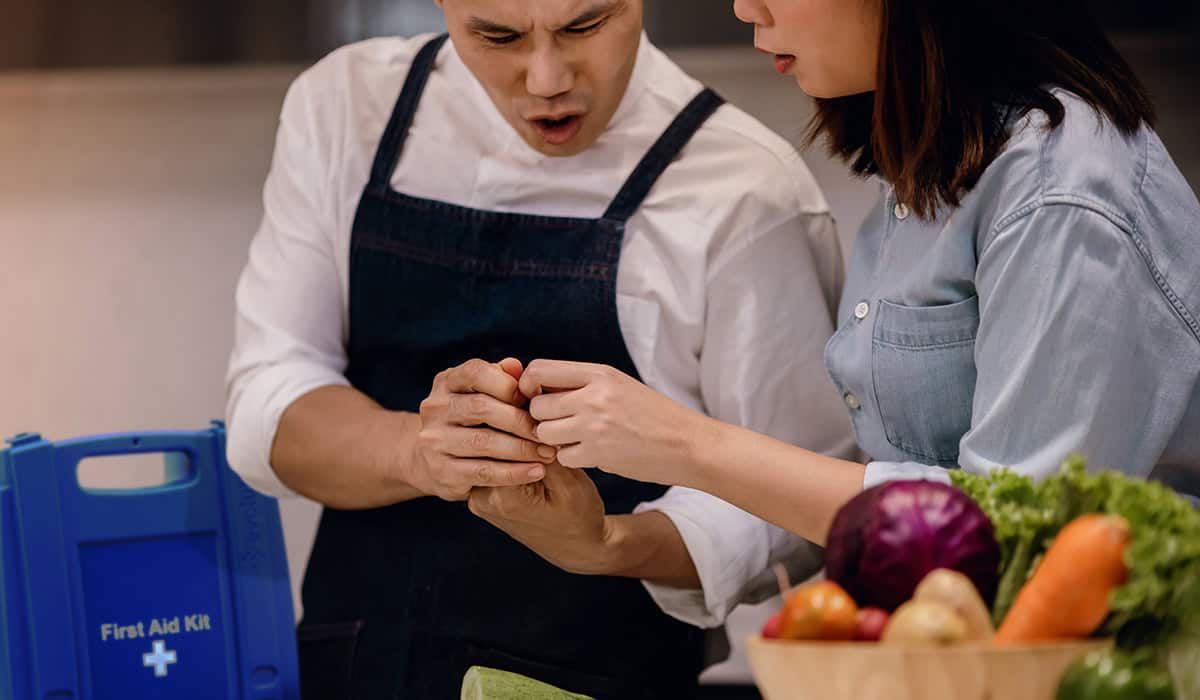
In the same guidance released by the HSE on the legal requirements for workplace first aid kits, there is information given on the number of first aiders, if any, a workplace is required to provide. As with the number of first aid kits, the number of first aiders is largely based upon risk assessment and the size of the kitchen.
Being able to identify a first aider in an emergency saves time that the casualty may not have otherwise have. There are many ways this can be done, such as signs and armbands.
Restocking
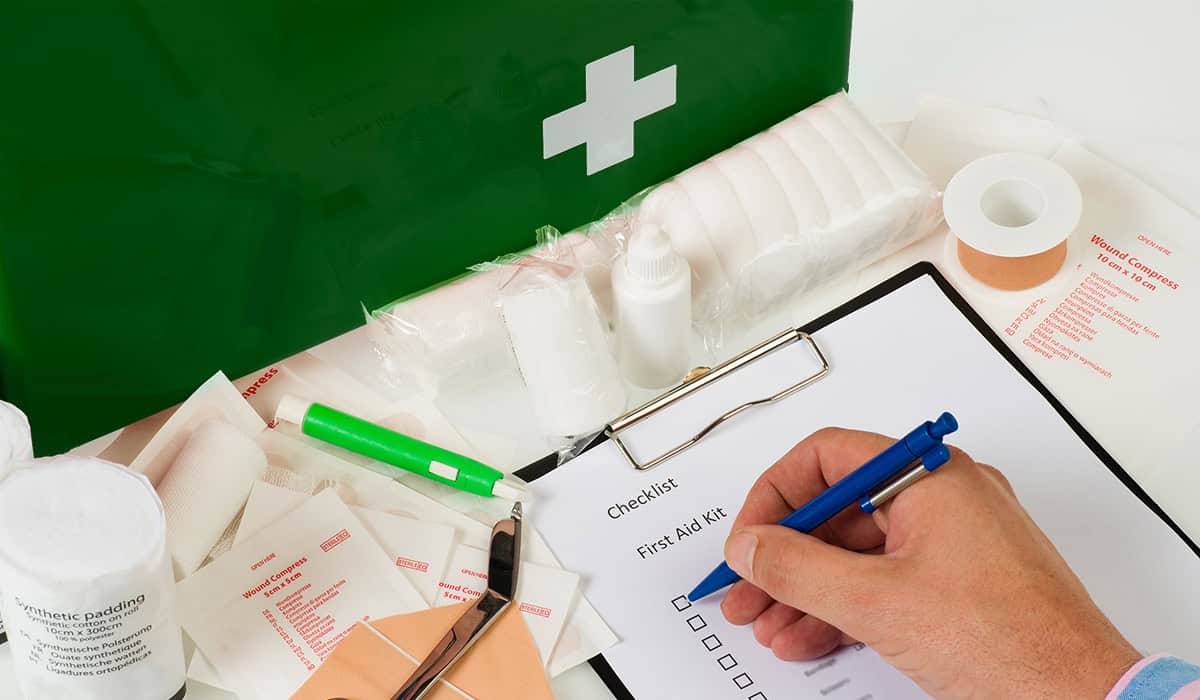
Your kitchen needs to have a fully stocked first aid kit to be legally compliant. This means that you will need to maintain your supply levels, making sure that items are replaced should they be used at any point.
This can easily be achieved by purchasing refill kits and by checking the supply levels after every use.
Accident Reporting
Having your accident book next to your catering first aid kit on a Catering First Aid & Accident Reporting Point will remind anyone going to retrieve first aid supplies that they need to make a record of the accident and relevant information.
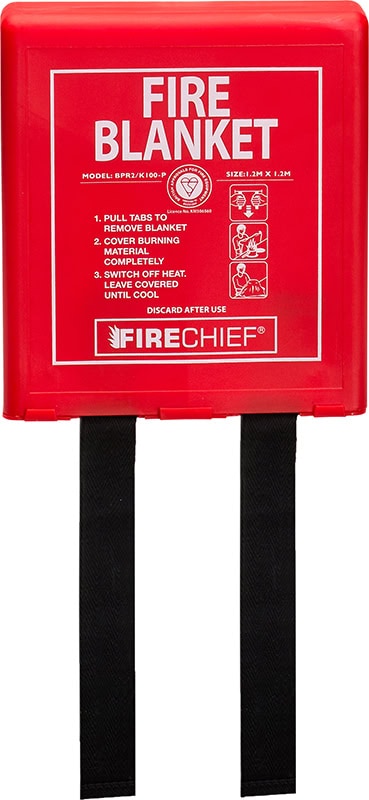 Fire Safety
Fire Safety
With the number of flammable items in a kitchen as well as the number of sources of heat, there is a high risk of fire. This makes it imperative that fire safety is taken into consideration when you are thinking about health and safety in a professional kitchen.Some measures that can be taken to ensure that staff are protected include:
- Running regular checks on your supplies using a log book
- Using fire signs correctly
- Training members of staff to act as fire marshals
What to remember when choosing a catering first aid kit
It is important that you research what type of first aid kits would be best suited to your kitchen and adapt them based upon your risk assessment. Kitchens can be dangerous workplaces at times so it is better to be over prepared and take staff injury seriously than be under prepared.When performing a risk assessment to choose the correct professional catering first aid kit remember to consider:
- How many staff are at your location?
- What supplies may be needed in an emergency?
- Do you need any trained first aiders?
- What are the legal requirements for your first aid supplies?
- What is needed for accident reporting?
- When do you need to restock your supplies?
Read our other blogs for more information on first aid or contact us for further advice and information on our products.
By Sarah Mason


